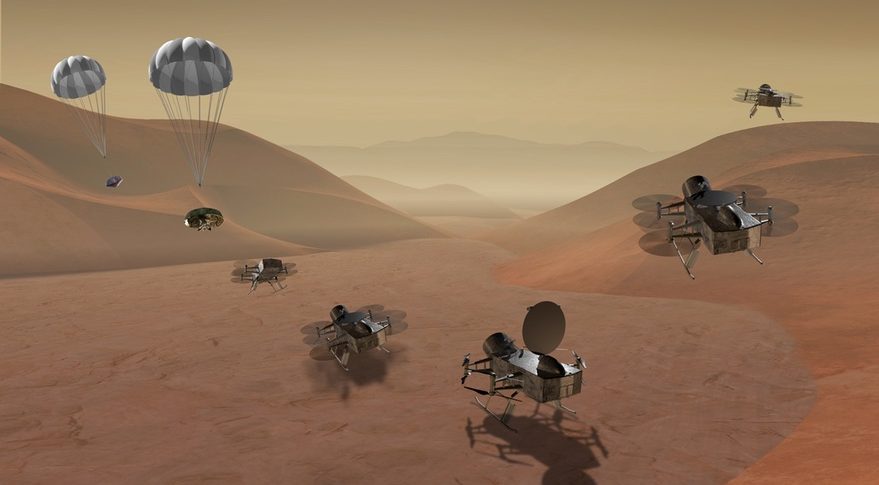- NASA has chosen two proposed missions from its New Frontiers competition
- One mission wants to search the surface of Saturn's moon Titan using a drone
- The other aims to take samples from the comet 67P/Churyumov-Gerasimenko
- Both missions will receive funding through the end of 2018 to further develop and mature their concepts
- NASA plans to select one in Spring 2019 - both cost about $850 million in development
NASA has selected two finalist concepts for a robotic mission planned to launch in the mid-2020s: a comet sample return mission and a dual quadcopter drone that would explore potential landing sites on Saturn’s largest moon, Titan.
Dragonfly
Dragonfly, a dual quadcopter drone would explore various sites on Titan. The drone would make use of the moon's dense atmosphere, flying from site to site to sample prebiotic chemistry and habitability of on the surface. Titan's atmosphere is four times as dense as our own and surface gravity only a seventh of Earth's.
The Applied Physics Laboratory (APL) of Johns Hopkins University would manage the mission and build the drone.
Comet Astrobiology Exploration Sample Return (CAESAR)
The CAESAR mission seeks to return a sample from 67P/Churyumov-Gerasimenko, a comet that was successfully explored by the European Space Agency’s Rosetta spacecraft, to determine its origin and history. CAESAR would collect 100 grams or more of volatile and non-volatile material from the comet for return to Earth.
This mission, led by Steve Squyres of Cornell University, would be managed by NASA's Goddard Space Flight Center.
Either CAESAR or Dragonfly, if selected, will operate well into the 2030s. Dragonfly would land on Titan in 2034 and operate there for several years, powered by a radioisotope thermoelectric generator. CAESAR would return its samples to Earth in 2038.
This isn't the first drone concept for space exploration. NASA has been researching and testing drone applications for use on Mars.


